Cote d'Ivoire
Photos
6 Photos
Filter Categories
All
Filters
An image of West Africa's Ivory Coast region in 2007 when wet season rains came late. Instead of beginning in February, the rainy season did not start until March, and steady rains did not begin until late March. Though the rain had started to alleviate the drought, vegetation was still depressed in parts of Cote d'Ivoire (Ivory Coast) between 22 March and 6 April 2007, when NASA's Terra satellite captured the data used to make this photo. The image compared vegetation at that time to average conditions recorded since 2000. Areas where plants were growing more slowly or more sparsely than average showed up as brown, while areas where vegetation was denser than average were green. The brown tint dominating the image indicates that plants through most of the country were more sparse than normal. The three major rivers that cross the country from north to south are all but invisible leaving only central Lake Kossou conspicuous as a major water body. Among the crops affected by the lack of rain was West Africa's cocoa crop. About 70 percent of the world's cocoa comes from West Africa and Cote d'Ivoire is a top grower. Image courtesy of NASA.
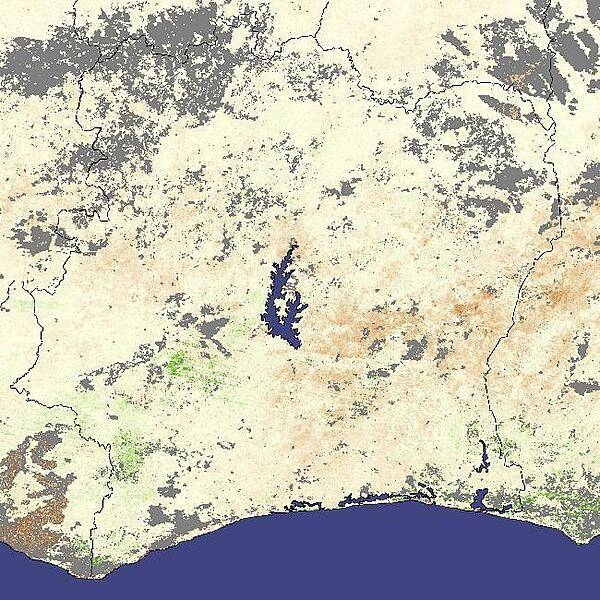
Cote D’Ivoire’s distinctive national tri-color flag flies freely on the prows of various boats anchored in Abidjan harbor.
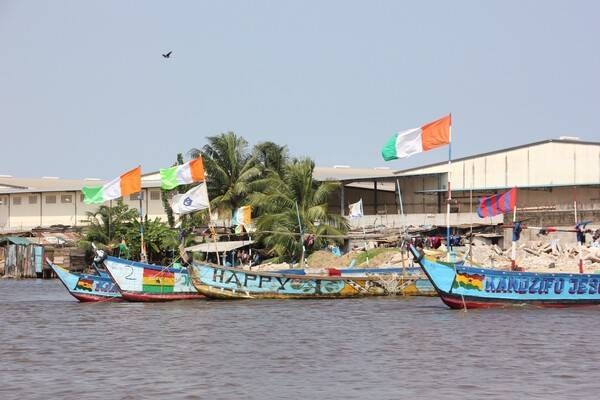
Fishermen ply their trade; the Abidjan skyline appears in the background.
Abidjan is the economic capital of the Ivory Coast. The city expanded quickly after the construction of a new wharf in 1931, followed by its designation as the capital city of the then-French colony in 1933. Abidjan remained the capital of the Ivory Coast after its independence from France in 1960. The completion of the Vridi Canal in 1951 enabled Abidjan to become an important sea port. In 1983, the city of Yamoussoukro was designated as the official political capital of Ivory Coast. However, most political institutions and foreign embassies continue to be located in Abidjan.
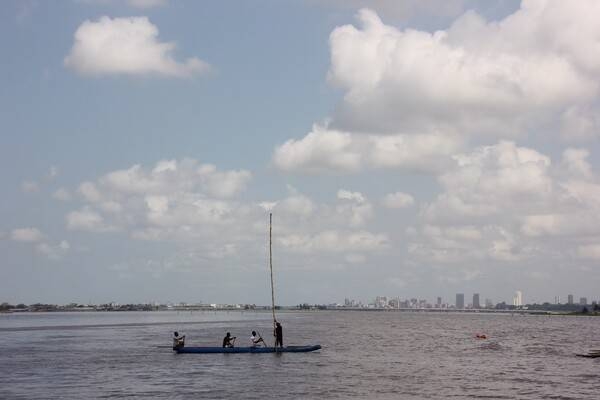
A woman carrying eggs and a baby.
Côte d'Ivoire is a juxtaposition of urban and rural conditions. Its cities, particularly Abidjan, are full of modern office buildings, condominiums, European-style boutiques, and trendy restaurants. They stand in sharp contrast to the country's many villages - accessed mainly by dirt roads - whose architecture is comprised of huts and simple abodes. While the cities are described as crowded urban enclaves with traffic and a dichotomy of rich and poor residents, the villages are filled with farmers tending their fields, native dress, homemade pottery, and traditional tribal rituals.
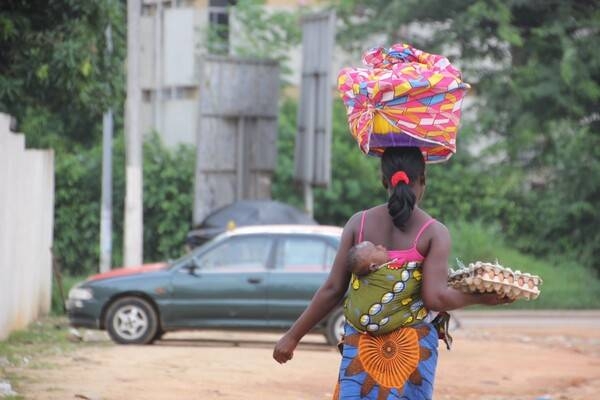
Gathering coconuts along the shore near Abidjan.
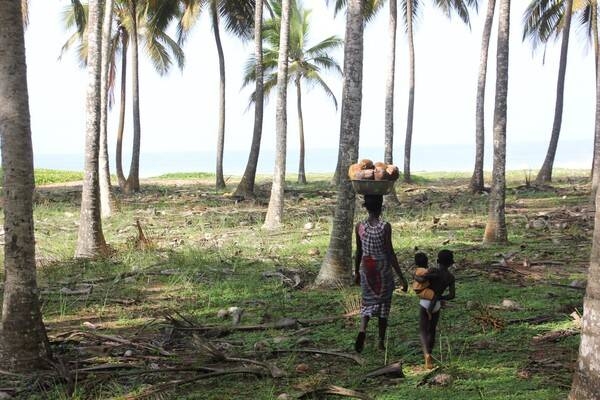
A grove of coconut trees in a village not far from Abidjan.
